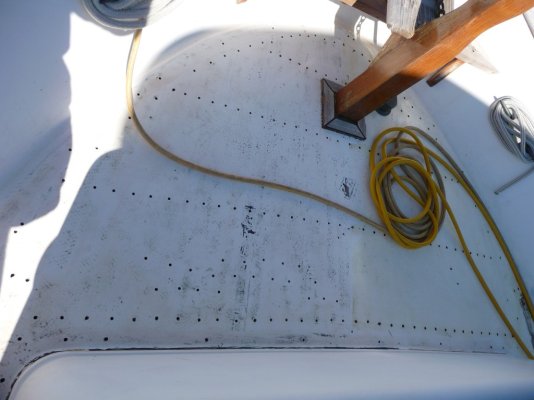im going to start removing my teak decks on my 1981 albin 43' trawler.
here are a few questions i have;
should i remove all the teak at once, or do one spot at a time? ie; 8 ft sections...
once teak is removed i understand i inspect the core and see what repairs are needed, then drill out the screw holes and fill with epoxy..
what is the best method of removing the black adhesive?
do i need to add layers of glass to add strength to the decks? if so which type and weight cloth should i use?
im planning on using gelcoat to go over the decks, insted of paint because the gel coat is much more afforable and is just as good as paint if not better.
what is the best way to remove the teak? ive seen alot of different tools used in the process by other people.
anything else you can add that you may have learned by doing this on your boat I would appricate any thoughts.
thanks to all!
here are a few questions i have;
should i remove all the teak at once, or do one spot at a time? ie; 8 ft sections...
once teak is removed i understand i inspect the core and see what repairs are needed, then drill out the screw holes and fill with epoxy..
what is the best method of removing the black adhesive?
do i need to add layers of glass to add strength to the decks? if so which type and weight cloth should i use?
im planning on using gelcoat to go over the decks, insted of paint because the gel coat is much more afforable and is just as good as paint if not better.
what is the best way to remove the teak? ive seen alot of different tools used in the process by other people.
anything else you can add that you may have learned by doing this on your boat I would appricate any thoughts.
thanks to all!


